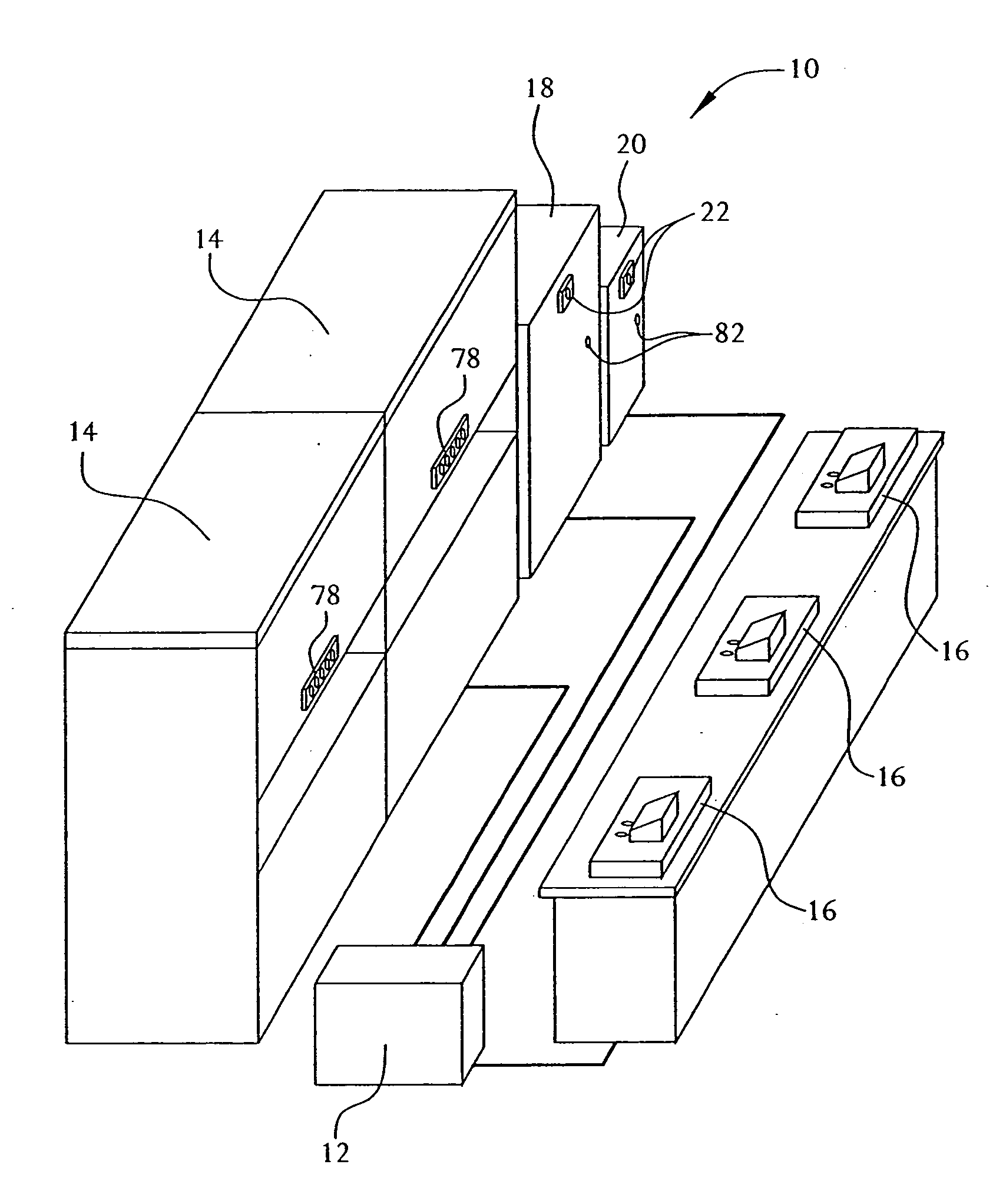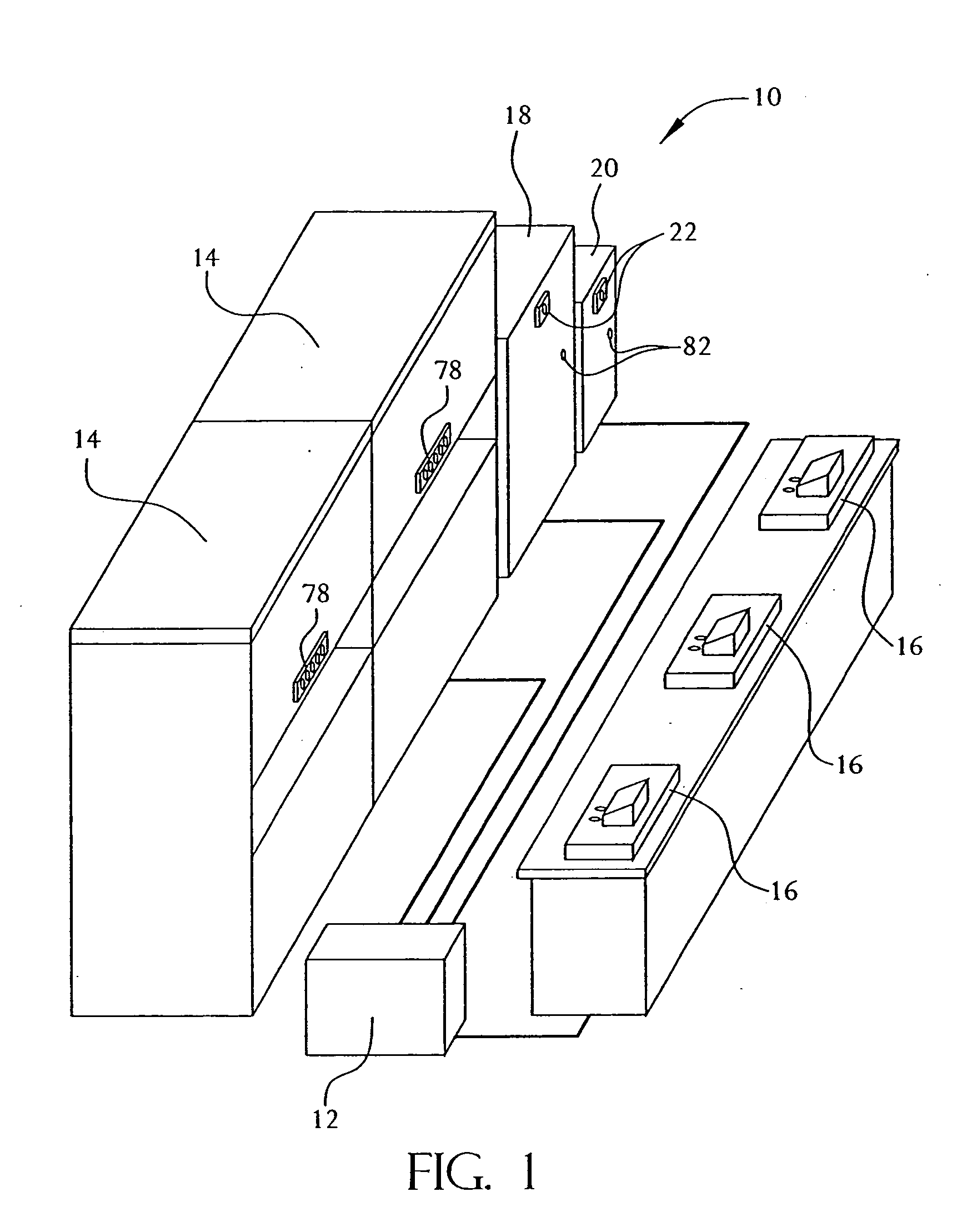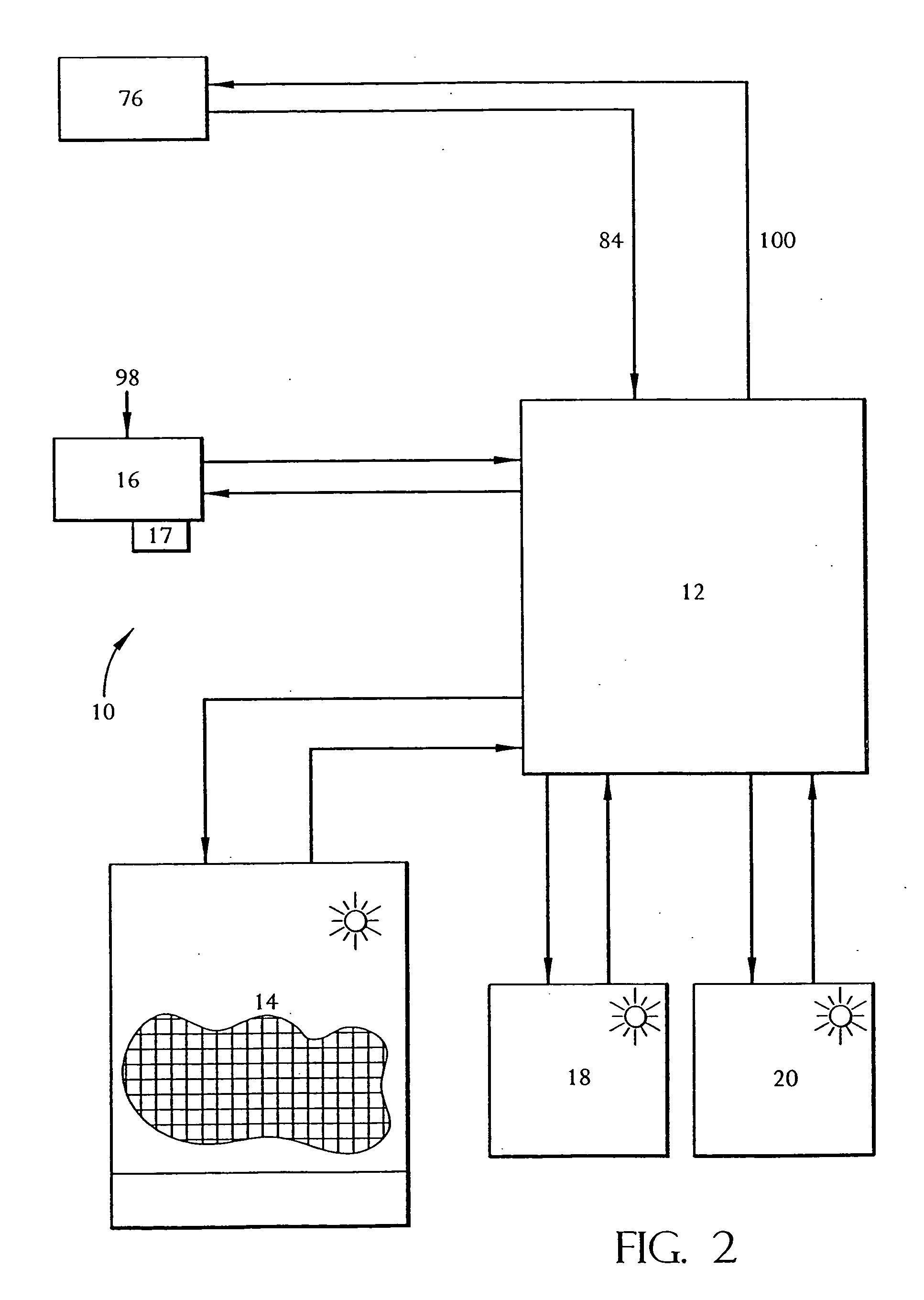Automated will call system
a will call and automatic technology, applied in the field of will call systems, can solve the problems of large floor space occupied by the retrieval system, inability to accommodate different sizes of objects, and the length of time necessary to retrieve objects, so as to achieve efficient and accurate will call functions
- Summary
- Abstract
- Description
- Claims
- Application Information
AI Technical Summary
Benefits of technology
Problems solved by technology
Method used
Image
Examples
Embodiment Construction
[0039] The description contained herein relates to the specific structures of an automated will call system as presently contemplated. This description, however, is intended to be illustrative only and not limiting as to the scope of the present invention. For example, while the invention will be described in the context of storing, retrieving, and dispensing prescriptions, the invention is applicable to storing, retrieving, and dispensing other items as well.
[0040] In the drawings, where like numerals indicate like elements, there is shown an automated will call system in accordance with the present invention. The drawings are schematic in that non-essential structures and elements have been omitted.
[0041] As shown in FIGS. 1 and 2, an automated will call system 10 according to the invention includes a controller 12, at least one storage unit 14, at least one user work station 16, and an optional refrigerator 18 and an optional secure storage unit 20. The individual elements of t...
PUM
 Login to View More
Login to View More Abstract
Description
Claims
Application Information
 Login to View More
Login to View More - R&D
- Intellectual Property
- Life Sciences
- Materials
- Tech Scout
- Unparalleled Data Quality
- Higher Quality Content
- 60% Fewer Hallucinations
Browse by: Latest US Patents, China's latest patents, Technical Efficacy Thesaurus, Application Domain, Technology Topic, Popular Technical Reports.
© 2025 PatSnap. All rights reserved.Legal|Privacy policy|Modern Slavery Act Transparency Statement|Sitemap|About US| Contact US: help@patsnap.com



